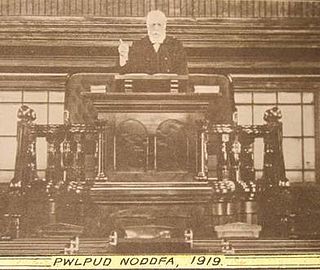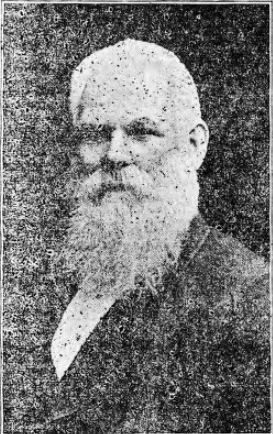Related Research Articles

Cynon Valley is a former coal mining valley in Wales. It lies between Rhondda and the Merthyr Valley and takes its name from the River Cynon. Aberdare is located in the north of the valley and Mountain Ash in the south. From 1974 to 1996, Cynon Valley was a local government district.

Ynyshir is a village and community located in the Rhondda Valley, within Rhondda Cynon Taf, South Wales. The name of the village means "long island" in Welsh and takes its name from a farm in the area, falling within the historic parishes of Ystradyfodwg and Llanwynno (Llanwonno). The community of Ynyshir lies between the small adjoining village of Wattstown and the larger town of neighbouring Porth.

Ystradyfodwg or Ystrad Dyfodwg was an ancient upland parish in Glamorgan, Wales. It is believed to have been named after Dyfodwg a 6th-century saint or chieftain. The parish included most of the area which would later be known as Rhondda named for the parish rivers, Rhondda Fawr and Rhondda Fach.

Rhondda was a local government district in the geographical area of the Rhondda Valley, south Wales, from 1877 until 1996, with various statuses through its history.

Llanwonno is a hamlet high up in the hills between the historic mining valleys of the Rhondda and the Cynon in Rhondda Cynon Taf, deep in the heart of the South Wales Valleys. Llanwonno consists of St Gwynno's Church and an inn – The Brynffynon Hotel.

Cymmer is a village and community in the Rhondda Valley, Wales. It is so named because of being located at the 'confluence' of the Rhondda Fawr and Rhondda Fach river valleys. Several collieries were opened here in the middle part of the nineteenth century. A coal mine disaster in 1856 resulted in 114 casualties, and the lack of payment of any compensation to the miners' families caused bitter feelings in the community.
Aberdare Urban District Council was a local authority in Aberdare, Wales.
The first election to the Glamorgan County Council was held on 17 January 1889. Results were announced over several days. They were followed by the 1892 election. The authority, by far the largest county in Wales in terms of population, was established by the 1888 Local Government Act. The county of Glamorgan was at this time becoming heavily industrialised although some areas such as the Vale of Glamorgan remained essentially rural.

William Morris, widely known by his bardic name, Rhosynnog, was the minister of Noddfa Baptist Church, Treorchy, South Wales from soon after its formation in 1868 until his death.
The second election to the Glamorgan County Council was held on 8 March 1892. The 1889 election was the first contest and the next was the 1895 election. Glamorgan County Council had been established by the 1888 Local Government Act, and the first election held in January 1889. Glamorgan was by far the largest county in Wales in terms of population. The county of Glamorgan was at this time becoming heavily industrialised, although some areas such as the Vale of Glamorgan remained essentially rural. The rise of nonconformist liberalism, especially since the 1860s, throughout Wales, had challenged the prevailing influence of the landed gentry. However, even in 1889, the traditional forces remained influential and no working men were elected to the Council. This changed in 1892 with the unopposed return of David Morgan in Aberdare and the success of Isaac Evans in Resolven.
The Ystradyfodwg School Board, covering the rapidly growing Rhondda Valleys was formed in 1878 and consisted of thirteen members elected for a period of three years. It was abolished, along with other School Boards in 1902 and its responsibilities transferred to Glamorgan County Council.

Idris Williams was an educationalist, prominent Congregationalist, and Liberal councillor for the Cymmer division of the Glamorgan County Council, South Wales.
The Glamorgan County Council election, 1898 was the fourth contest for seats on this authority. It was preceded by the 1895 election and followed by the 1901 election. Glamorgan was by far the largest county in Wales in terms of population. Glamorgan County Council had been established by the 1888 Local Government Act, and the first elections held in early 1889. The county of Glamorgan was at this time becoming heavily industrialised, although some areas such as the Vale of Glamorgan remained essentially rural. The rise of nonconformist liberalism, especially since the 1860s, throughout Wales, had challenged the prevailing influence of the landed gentry. However, even in 1889, the traditional forces remained influential and no working men were elected to the Council. This changed in 1892 with the unopposed return of David Morgan in Aberdare and the success of Isaac Evans in Resolven.
Rhondda Urban District Council was a local authority in Glamorgan, Wales. It was created in 1894 as a result of the 1894 Local Government of England and Wales Act and the 1894 election saw the election of the first members of the authority, initially known as the Ystradyfodwg Urban District Council. The Council existed until 1973 and replaced the Ystradyfodwg Local Board of Health which had functioned since the 1870s.. Initially, the Council had fifteen members but this was increased to twenty in 1906, as a result of the increase in population. There were five wards.
The 1901 Glamorgan County Council election was the fifth contest for seats on this authority in south Wales. It was preceded by the 1898 election and followed by the 1904 election. Glamorgan was by far the largest county in Wales in terms of population. Glamorgan County Council had been established by the Local Government Act 1888, the first elections being held in early 1889.
Aberaman is an electoral ward in Rhondda Cynon Taf, Wales. It was an electoral ward for much of the twentieth century, for the purposes of electing members to Glamorgan County Council and the Aberdare Urban District Council. The village of Aberaman was subsequently covered by two electoral wards, Aberaman North and Aberaman South, for the purposes of electing members to the Rhondda Cynon Taf County Borough Council. Aberaman North was composed mainly of Aberaman itself while Aberaman South included Abercwmboi, Cwmaman, Godreaman and Glynhafod.
Pontypridd Urban District Council was a local authority in Glamorgan, Wales. It was created in 1894 as a result of the 1894 Local Government of England and Wales Act. The Council existed until 1973 and replaced the Pontypridd Local Board of Health which had functioned for some years. Its boundaries were set in 1894. Initially, the Council had eighteen members but this number was increased in the 1930s, as a result of the increase in population. There were initially six wards, namely Cilfynydd, Graig, Pontypridd Town, Rhondda, Trallwn and Treforest; a seventh ward, Rhydyfelin, was added in the 1930s.
Aberdare Town was, for much of the twentieth century, an electoral ward for the purposes of electing members to Glamorgan County Council and the Aberdare Urban District Council. It currently comprises two electoral wards, Aberdare East and Aberdare West/Llwydcoed, for the purposes of electing members to the Rhondda Cynon Taf County Borough Council. Aberdare East is composed mainly of a part of Aberdare itself while Aberdare West includes the community of Llwydcoed which, for many years was itself as electoral ward.
The community of Llwydcoed, Rhondda Cynon Taf was, for much of the twentieth century, and electoral ward for the purposes of electing members to Glamorgan County Council and the Aberdare Urban District Council. Llwydcoed is no longer an electoral ward but forms part of Aberdare West/Llwydcoed electoral ward for the purposes of Rhondda Cynon Taf unitary authority elections
Mountain Ash Urban District was a local authority in Mountain Ash, in the Cynon Valley, Glamorgan, Wales. It was created in 1894 as a result of the 1894 Local Government of England and Wales Act. The council replaced the Mountain Ash Local Board of Health which had been established in 1867. Initially, the Council had fifteen members, but this was increased to eighteen in 1898. The council was based at Mountain Ash Town Hall. The urban district was abolished in 1974, becoming part of the borough of Cynon Valley, which was in turn abolished in 1996 to become part of Rhondda Cynon Taf.
References
- ↑ "The Parish Councils - Further Returns of the Elections". Evening Express. 19 December 1894. p. 3. Retrieved 29 March 2014.
- ↑ "The New Councils - Urban District Councils - Glamorganshire". Evening Express. 21 December 1894. p. 3. Retrieved 29 March 2014.